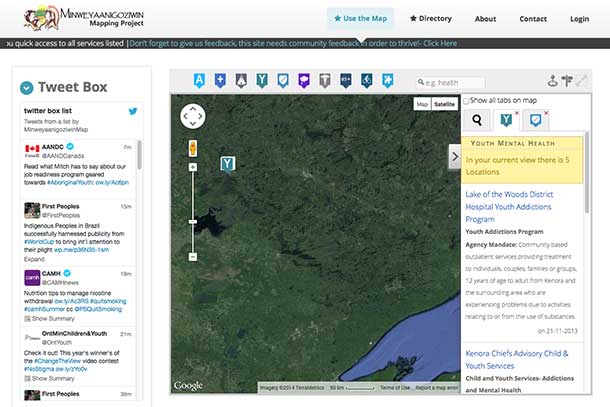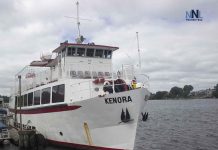
KENORA – Chief Fawn Wapioke, Iskatewizaagegan Independent First Nation has announced the launch of a new website designed to assist Kenora area First Nations citizens, communities, and organizations in accessing Mental Health and Addiction services.
Iskatewizaagegan Independent First Nation received funding from the Health Services Integration Fund (HSIF) to work with partners to increase access to mental health and addiction services for First Nation citizens in the Kenora area by developing an integrated system of care. Mental Health and addictions has always been a considerable challenge in this area which has historically been inadequately serviced.
Iskatewizaagegan Independent First Nation with other First Nations in the Kenora area to align and coordinate Mental Health and Addictions programs and services to benefit the 6,851 First Nation citizens in the participating communities.
A dedicated Steering Committee composed of key influencers have guided this project since October 2012 including:
- Waasegiizhig Nanaandawe’iyewigamig Health Access Centre (WNHAC);
- Community Programs, Lake of the Woods District Hospital (LWDH);
- District Assertive Community Treatment Team (ACTT), Canadian Mental Health Association (CMHA) Kenora Branch;
- Treaty Three Police Service;
- Northwest Local Health Integration Network (NW LHIN); and
- First Nation and Inuit Health, Thunder Bay Zone
Through the work of the Steering Committee it was discovered that there were 38 mental health and addictions service providers in the area with a mandate to service First Nation citizens funded by the NW LHIN and provincial government.
However in Iskatewizaagegan, only three (3) organizations provided services on reserve in part due to an assumption that First Nation communities were beyond their service catchment area. Secondly, the First Nation was unaware of existing services 40 kilometres away. Furthermore, even individual Steering Committee members were unaware of the mandate of various providers. The Minweyaanigoziwin Mapping Project was created in response to this gap in information. The mapping project was not a funded deliverable of the HSIF project so four partners on the Steering Committee contributed funds to pay for the website development: WNHAC; LWDH; CMHA Kenora Branch, and Iskatewizaagegan Independent First Nation.
One admirable outcome of this interactive mental health and addictions services webpage is that it grew from the cooperation and collaboration of the HSIF steering committee members. The NW LHIN provided the initial list of service providers; HSIF Project Coordinator Kienan Williams updated their research, members of the Steering Committee clarified misinformation and then Sean Lougheed, of the ACTT CMHA Kenora Branch, took the lead and working with summer staff and intern students updated the information. Sean Lougheed hired the developer Jeremy Suke, NuFuzion Design and coordinated the web design – all with input from the Steering Committee. Area First Nations were invited to a meeting in February 2014 to provide additional input to the website.
This website is designed as a resource so that a front line worker can research the directory and determine any relevant services to which they may refer their client. Service providers will be able to find contact information for area First Nations who are addressing mental health and/or addictions and improve their integration or support for clients. Additional content will be uploaded to the webpage as it is made available.
The process of learning more about agencies funded to provide mental health and addiction services in the Kenora area has benefitted the HSIF project in many ways. Through discussions and agreements led by Iskatewizaagegan, many service providers have come to realize that working with the limited number of First Nation’s staff on reserve is improving collaboration and coordination thereby resulting in increased access to funded services and eventually improved health outcomes for First Nation citizens.
The Minweyaanigoziwin HSIF project is unique in that the continuum of care is created through multiple individual agreements between a First Nation and a single service delivery organization. The formal and informal agreements collectively provide better use of existing resources and services by linking First Nations and non-Aboriginal Addictions and Mental Health service providers.
This model of care will increase access to services by making it easier for those First Nations people who struggle with Mental Health and Addictions issues to feel secure in a culturally competent approach and by bringing services to the First Nation community where appropriate.
Health Services Integration Fund (HSIF), Health Canada HSIF headquarters and the Ontario Regions have conveyed their congratulations and are very impressed by the project’s accomplishments to date (June 11, 2014 correspondence).
Iskatewizaagegan Independent First Nation and the Minweyaanigoziwin HSIF Steering Committee members have provided a community owned and maintained site. Service providers named on the website are encouraged to contact the Minweyaanigoziwin Mapping Project through the feedback form on the homepage to update information.






